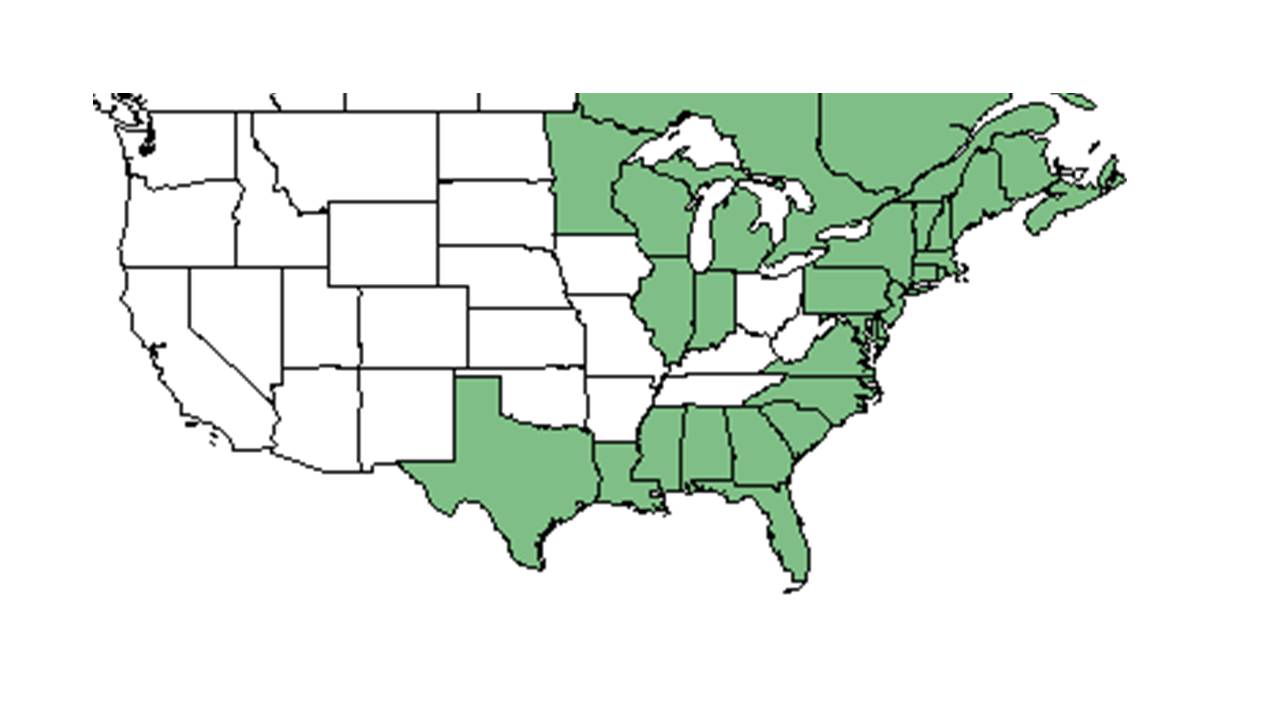Difference between revisions of "Utricularia purpurea"
(→Taxonomic notes) |
(→Ecology) |
||
| Line 35: | Line 35: | ||
===Phenology=== <!--Timing off flowering, fruiting, seed dispersal, and environmental triggers. Cite PanFlora website if appropriate: http://www.gilnelson.com/PanFlora/ --> | ===Phenology=== <!--Timing off flowering, fruiting, seed dispersal, and environmental triggers. Cite PanFlora website if appropriate: http://www.gilnelson.com/PanFlora/ --> | ||
Flowering has been observed April through November and fruiting April through September (FSU Herbarium). | Flowering has been observed April through November and fruiting April through September (FSU Herbarium). | ||
| + | <!--===Seed dispersal===--> | ||
| + | <!--===Seed bank and germination===--> | ||
| + | <!--===Fire ecology===--> <!--Fire tolerance, fire dependence, adaptive fire responses--> | ||
| + | <!--===Pollination===--> | ||
| + | <!--===Use by animals===--> <!--Herbivory, granivory, insect hosting, etc.--> | ||
| + | carnivorous plant – bladderwort (Hermann 1995). | ||
| + | <!--===Diseases and parasites===--> | ||
| − | |||
| − | |||
| − | |||
| − | |||
| − | |||
| − | |||
| − | |||
==Conservation and Management== | ==Conservation and Management== | ||
==Cultivation and restoration== | ==Cultivation and restoration== | ||
Revision as of 14:44, 7 June 2016
| Utricularia purpurea | |
|---|---|

| |
| Photo was taken by Gil Nelson | |
| Scientific classification | |
| Kingdom: | Plantae |
| Division: | Magnoliophyta – Flowering plants |
| Class: | Magnoliopsida – Dicotyledons |
| Order: | Scrophulariales |
| Family: | Lentibulariaceae |
| Genus: | Utricularia |
| Species: | U. purpurea |
| Binomial name | |
| Utricularia purpurea Walter | |

| |
| Natural range of Utricularia purpurea from USDA NRCS Plants Database. | |
Common name: eastern purple bladderwort
Contents
Taxonomic notes
Synonym: Vesiculina purpurea (Walter) Rafinesque
Description
"Herbaceous aquatic or bog plants with bladders; stems submersed or subterranean, frequently capillary. Leaves alternate or whorled, rarely opposite, dissected or forked into filiform segments or linear when surficial. Scapes elongate, to 5 dm tall, 1-20 flowered; bract solitary at base of pedicel, bractlets paired with present, usually absent; pedicels 0.5-3 cm long. Calyx 2-lobed or lipped, upper lip entire or 2-lobed, lower lip usually 3-lobed, elevated inside as a palate and prolonged as a spur or sac. Capsules brown, globose; seeds usually numerous, brown or yellow." - Radford et al 1964
"Plant floating, branches whorled. Leaves whorled or opposite, segments frequently terminating in bladders. Scapes 5-9 cm tall, 1-3 flowered; bracts sessile, 1.5-3 mm long; pedicels spreading-ascending, 6-15 mm long. Calyx ca. 2.5 mm long, larger lobes ca. 2 mm long; corolla purple, 9-12 mm long, spur 3-5 mm long. Capsules 3-3.6 mm in diam.; seeds round, echinate or irregularly cristate, ca. 0.5 mm in diam." - Radford et al 1964
Distribution
Ecology
Habitat
Utricularia purpurea can be found entirely under water and frequent with Utricularia foliosa and Nymphaea (FSU Herbarium).
Phenology
Flowering has been observed April through November and fruiting April through September (FSU Herbarium). carnivorous plant – bladderwort (Hermann 1995).
Conservation and Management
Cultivation and restoration
Photo Gallery
References and notes
Florida State University Robert K. Godfrey Herbarium database. URL: http://herbarium.bio.fsu.edu. Last accessed: July 2015. Collectors: Robert K. Godfrey, Richard S. Mitchell, Annette Mitchell, Robert Kral, Loran C. Anderson, P. L. Redfearn, Jr., W. P. Adams, Grady W. Reinert, John B. Nelson, Kathy Craddock Burks, Elmer C. Prichard, M. R. Vodicka, Ted Bradley, J Stevenson, R. M. Schuster, Harry E. Ahles, J. Haesloop, D. B. Ward, S. S. Ward, Jean W. Wooten, D E Harrison, F Henry, Joel A. Barnes, Wilson Baker, Ann Johnson, N. Hotchkiss, Cecil R Slaughter, Palmer Kinser, Joe Beck. States and Counties: Florida: Bay, Calhoun, Collier, Franklin, Gulf, Hamilton, Highlands, Jefferson, Leon, Liberty, Orange, Osceola, Palm Beach, Santa Rosa, Taylor, Volusia, Wakulla, Walton. Georgia: Grady, Thomas, Ware. Michigan: Schoolcraft. Mississippi: Jackson. New Hampshire: Grafton. North Carolina: Brunswick. South Carolina: Orangeburg. Compiled by Tall Timbers Research Station and Land Conservancy.
Hermann, S. M. (1995). Status and management of Florida's carnivorous plant communities. Tallahassee, Florida Game and Fresh Water Fish Commission, Nongame Wildlife Program.
Radford, Albert E., Harry E. Ahles, and C. Ritchie Bell. Manual of the Vascular Flora of the Carolinas. 1964, 1968. The University of North Carolina Press. 969. Print.